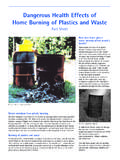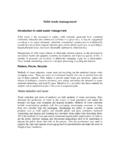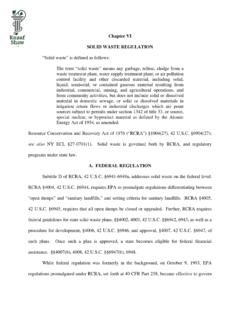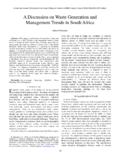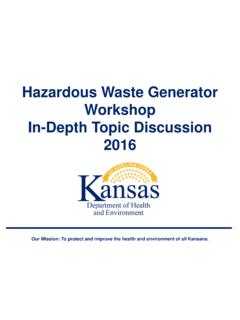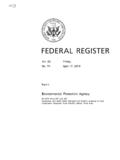Transcription of Turning Waste Wood into a Profit for your Business
1 Turning Waste Wood into a Profit for your BusinessA Strong Company2A Strong Energy CompanyBurning Waste Wood in Biomass BoilersOver the past few years the biomass sector has grown significantly. The commercial sector has embraced this technology and has already received billions of pounds through the Governments Renewable Heat Incentive (RHI) scheme. The Government has recently renewed its commitment to the RHI by announcing the reformed RHI which will introduce some modifications to the scheme but in essence the scheme remains very similar insofar as it provides businesses with a cash incentive payable for every kilowatt hour of energy generated from renewable heating technology for 20 years index-linked and guaranteed once accepted onto the RHI businesses across the UK have installed biomass systems to provide space and process heating.
2 However, the majority of these installations have been designed to run on virgin wood chip or wood pellet fuel but it is possible to obtain the RHI for biomass systems running on Waste wood. The regulations regarding the definition of Waste wood and the emissions controls required when burning the various categories of Waste wood are complex but Wood Energy is able to assist with initial guidance, designing and providing a technical solution to suit individual Business opportunity / is Waste Wood?The principal criteria for determining the regulatory status of a biomass combustion facility is whether or not the fuel is classified as a Waste .
3 Whether a material is Waste or not is determined by reference to the European Framework Timber and Clean BiomassThe combustion of virgin timber and clean biomass fuel is regarded as solid fuel combustion and is regulated accordingly under the Environmental Permitting Regulations or the Clean Air Act 1993, depending upon the thermal input of the where virgin timber is mixed with Waste timber, or any other Waste , the mixed load is classed as Waste Timber and Waste WoodNon virgin timber such as off cuts, shavings, chippings and sawdust from the processing of non-virgin timbers (whether untreated or treated) are Waste wood.
4 Untreated non-virgin Waste wood, despite not having been treated with any chemicals, is Waste wood. Treated non-virgin timber is any timber that has been treated ( to enhance the performance of the original wood) or made into panel board of any sort is Waste biomass material that is Waste would be subject to the Industrial Emissions Directive (IED) regulations as applied to the Waste incineration process. However the IED provides for exemption of certain biomass materials and these are not subject to the operational requirements of the IED and, dependant on the net rated thermal output of the installation, can be regulated by the Local Strong Energy CompanyThe Categories of Waste WoodThe wood recycling industry grade Waste wood into four grades A, B, C and D this is presented in a document (PAS 111:2012).
5 PAS 111 identifies four grades of Waste wood, A, B, C and D, according to their general suitability for certain end uses. The grades are dependent upon the composition, chemical physical condition, levels of non-wood contamination, and other characteristics of the Waste wood. The classification system is summarised AGrade B Clean recycled wood Material produced from packaging Waste and secondary manufacture including untreated process off-cuts, scrap pallets, packing cases and cable feedstock grade May contain Grade A wood together with other Waste wood from construction and demolition activities, transfer stations and solid wood furniture CGrade DIncludes Grade A & B wood plus material coated and treated with preservatives typically including a high content of panel products.
6 Suitable only for IED Chapter IV Compliant Waste This includes all grades of wood including treated material such as fencing and track-work and requires disposal at special hazardous Strong Energy CompanyDepending upon the classification of recycled wood burned by a biomass boiler, there will be a requirement to apply for an environmental permit prior to operation. This is in addition to any planning requirements that may be required to enable a new biomass boiler installation, involving new buildings and structures, to proceed. The permitting requirements can be summarised as follows, and assume that the biomass boilers fall below the threshold for control by the Environment regulations that apply to the burning of biomass in the UK are currently defined within the Environmental Permitting (England and Wales) Regulations 2010 and subsequent amendments, and the Pollution Prevention and Control Regulations (Scotland and Northern Ireland)
7 Which incorporate the requirements of the above European upon the scale of operation, and whether the fuel is a non- Waste , an exempt Waste or a Waste , biomass combustion will be regulated as either a combustion activity or as a Waste incineration activity, subject to regulation by either the Local Authority or the Environment Agency (EA) in England, Natural Resources Wales (NRW), the Scottish Environmental Protection Agency (SEPA) or the Northern Ireland Environment Agency (NIEA).The Environmental Permitting Regulations (EPR) enact the EUs The Waste Framework Directive and the The Industrial Emissions Directive (IED).
8 The IED is a recast of The Waste Incineration Directive (WID), The IPPC Directive (IPPC) and The Large Combustion Plant Directive (LCPD). Permit Exemption is available for small appliances burning less than 50kg/hr ( ) where less than 5 tonnes of fuel are stored on site and where the operator is burning its own Waste . For combustion plant burning clean, non- Waste biomass the appropriate regulatory authority is determined solely by the net rated thermal input of the appliance. If the net rated thermal input is between 20 MWth and 50 MWth, then the facility will be regulated as a Section Part B(a) combustion activity by the Local Authority, or SEPA in Scotland and NIEA in Northern Ireland.
9 This applies to individual boilers, as well as multiple boilers with an aggregate net rated thermal input of >20 MWth. For appliances with net rated thermal inputs greater than 50 MWth, the appropriate regulatory authority is the Environment Agency (NRW, SEPA or NIEA). Appliances burning virgin timber or non- Waste biomass, with net rated thermal inputs of <20 MWth, are not regulated under the Environmental Permitting Regulations, but are still subject to the requirements of the Clean Air Act Classification of Biomass FuelsThe principal criterion for determining the regulatory status of a biomass combustion facility is whether or not the fuel is classified as a Waste and if it is classified as Waste whether it is exempt Waste , non-hazardous Waste or hazardous Conditions Associated with Environmental Permits7 Net Rated Thermal Input (MWth)
10 Regulatory ClassificationRegulator< (<50kg/hr)U4 ExemptionEnvironment to exempt Waste woodSection Part B(a)(v)Local Authority20 to 50 virgin timber & clean biomassSection Part B(a)Local Authority>50 virgin timber & clean biomassSection Part A(1)(a)Environment Agency>3 tonne per hour non-hazardous wasteSection Part A(1)(b)Environment Agency<3 tonne per hour non-exempt wasteSchedule 13 ALocal AuthorityVirgin Timber and Clean BiomassThe combustion of virgin timber and clean biomass is regarded as solid fuel combustion and is regulated accordingly under the Environmental Permitting Regulations or the Clean Air Act 1993, depending upon the thermal input of the table below provides a summary of the Permitting requirements (England & Wales).
